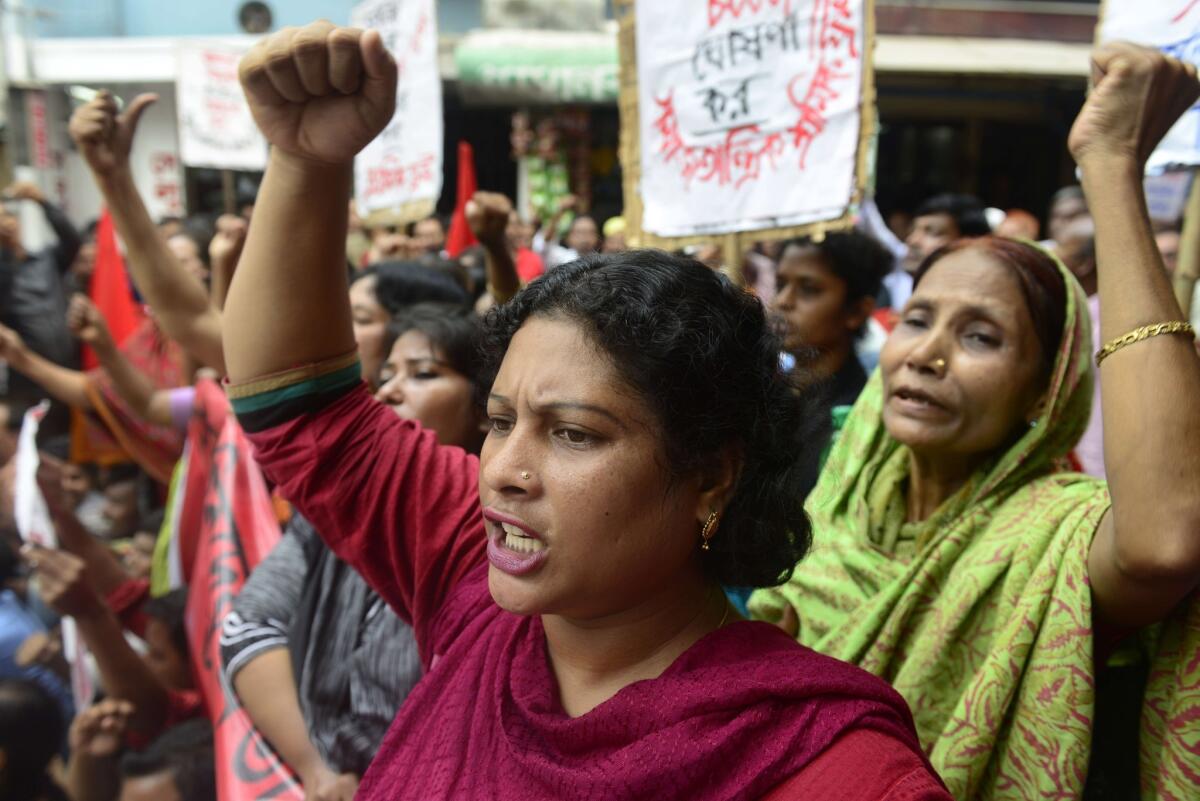Justice for Bangladesh’s garment workers

- Share via
A year after a factory fire in Bangladesh killed more than 100 people, and seven months after about 1,100 workers perished in the collapse of another commercial building, there are finally signs of progress toward ending the abominable abuses of that country’s garment workers, who have long been subjected to rock-bottom wages and grossly unsafe working conditions.
In the case of the Rana Plaza building, textile employees were told to go to work in April even after the structure had been declared vulnerable to collapse. In the Tazreen Fashion fire, workers were allegedly prevented from leaving the building during the early stages of the fire. The two factories made clothes for Wal-Mart, Sears, Disney and several other well-known firms.
At last, however, internal protests and international pressure are producing results. Last weekend, a Bangladeshi court ordered the government to pay better compensation to families of the victims after its failure to adequately enforce its own safety laws. There are reports that the owner of the Tazreen building will face criminal charges. On Sunday, a new minimum wage is scheduled to raise employee pay by 77%.
Meanwhile, U.S. and European retailers and clothing labels have agreed on a set of common safety and inspection standards for about 2,000 factories in Bangladesh that make clothes for such well-known companies as Wal-Mart, the Gap and H&M. Garment exports are a $20-billion-a-year industry in Bangladesh, and these standards are vital to ensure that factories that fail one company’s inspections don’t simply contract with less conscientious firms.
It all sounds promising, but the harder part will be maintaining the financial and managerial commitment by Bangladesh’s corporate customers in the West to frequent and stringent inspection, and to halting production rather than allowing the mistreatment of employees. In addition, there are some unfortunate signs that North American companies are not as fully committed as their European counterparts. European clothing labels will donate money to upgrade unsafe Bangladeshi factories; U.S. manufacturers will provide only loans. Manufacturers that are already operating close to the bone in order to promise the most competitive prices are less likely to take on the added obligation of borrowed money.
Moreover, U.S. retailers that sold clothing made at Tazreen and Rana Plaza have stayed aloof from an effort led by European companies to provide financial assistance to victims of the two factory catastrophes and their families.
They should be doing better, especially as American consumers head off to the annual Black Friday whirlwind of hunting for the cheapest possible goods. The single-minded focus on driving down prices is what led to horrifying conditions that retailers did too little to change until disaster forced their hand. This is a good time of year for shoppers to remember that there is a cost associated with saving that last 50 cents on a T-shirt. For too long, it has been borne by workers exposed to dangerous conditions and paid poverty wages.
More to Read
A cure for the common opinion
Get thought-provoking perspectives with our weekly newsletter.
You may occasionally receive promotional content from the Los Angeles Times.






